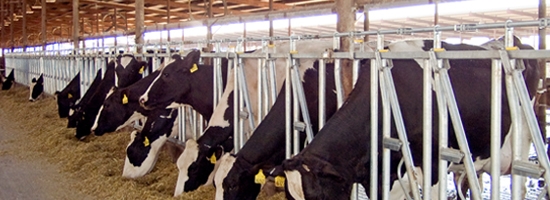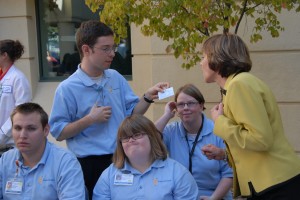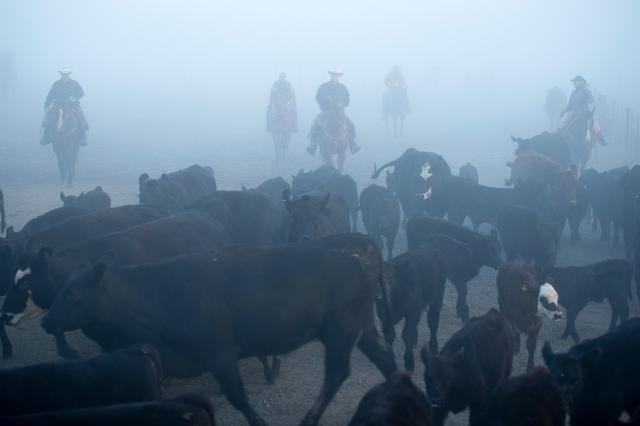By Ed Murrieta
Karen Ross, California’s head of Food and Agriculture, grew up on a cattle farm in western Nebraska. “This is a true confession,” Ross said over lunch (last month). “I grew up doing farm work and telling my dad that I was not going to stay on the farm. And every job I’ve ever had has been in agribusiness or ag policy.”
Appointed Secretary of the California Department of Food and Agriculture by Gov. Jerry Brown in 2011, Ross was previously chief of staff for U.S. Department of agriculture Secretary Tom Vilsack, a position she accepted in 2009. Before that, she was president of the California Association of Wine Grape Growers for 13 years. And before that, she was vice president of the Agriculture Council of California, lobbying on behalf of farmer-owned collectives.
What follows are edited highlights of my conversation with Karen Ross over lunch at Esquire Grill on Oct. 31.
It was a wide-ranging conversation that covered food security and food safety; agritourism and public markets; the diversity of California’s crops and cultures; the role of women in agriculture and farming; and what kind of food California’s secretary of Food and Agriculture likes to cook and eat.
Ross ordered radicchio chicken salad that had an earthy fall glow. I had the colorful crab Louie surrounded by a bouquet of beets and edible flowers. Esquire Grill’s new executive chef Scott Ostrander had debuted his first menu the day before, and he sent out some tastes: lobster salad with pomegranate seeds and fiery chilies served on a blade of lobster shell; a playful twist on peanut butter and jelly featuring bread crumbs tossed in peanut oil, dotted with dabs of jelly and grapes; tempura-fried beef tenderloin deftly constructed with blue cheese and onions on a rosemary skewer; and ethereal apple fritters glistening in sugar and caramel.
Diverse bounty
“Not many people fully understand California agriculture — just the sheer size and diversity of it the ability we have to grow 400 crops, to be a year-round industry. I think one of the things we have and we don’t highlight enough is that the diversity of our population has given us some fabulous ethnic food, ethnic markets and ethnic farmers.
That’s how people travel: They taste the food and then they have a sense of where they want to go. I think that can be a fabulous way of celebrating what we have here.”
Farm to school
“This is happening at a time when we are understanding much better the connection between nutrition and the avoidance of chronic diseases like obesity, like diabetes, like high blood pressure — all the things that impact quality of life as well as the cost of health care. This is an investment in our future. These children have a better position to achieve their potential if they have good nutrition and start early in their life with good nutrition.”
Serving farmers
“Being away from the farm, I really realized that the values system I have, my work ethic, my interest in people came from being on that farm. I think farmers are very special people. They’re working with Mother Nature. Being able to serve farmers and ranchers and the people who eat their food, that is something I feel very fortunate to be able to do.”
Public markets
“Food is a common language so being able to celebrate it in a public atmosphere is an opportunity to reconnect people. I grew up in the middle of nowhere in western Nebraska. Everything we did on a community basis was always around ‘bring food.’ It’s sharing, it’s bringing people together. I think a public market can serve a very functional purpose in terms of commerce and I think it can serve a very important social purpose. I think if you create a space that’s inviting and inclusive, people will gather and share. People like that sense of community.”
Culinary tourism
“Culinary tourism is one of the fastest growing sectors of tourism. California tourism generated a little over a hundred billion dollars last year. Twenty-four-and-a-half billion of that was food and beverage. We have those opportunities in this six-county Sacramento region — in the foothills we have wineries orchards, then you come down along the rivers with biking and boating and then you have the openness of Yolo County. Unlimited possibilities and a variety of farms. In Santa Barbara County, a lot of ranch families have figured out how to do ecotourism with ranch stays. It’s not that we want to turn these places into event centers, but it’s about allowing that farm family to generate some additional revenues to keep those farms going.”
Food safety
“That’s part of the California brand. In overseas markets, we’re known for food safety and environmental safety. It’s sad that people are so afraid of their own food supplies and that’s why they’re seeking you out, but that is a fact. China’s had enough food scares, which are often times just about somebody cutting corners and trying to make a fast buck. That erosion of confidence and trust in the food supply is a very real issue in China. That’s not good in the long term for any of us. If you have people who are not accessing proper food or nutrition, or it’s too high-priced, you have civil unrest. I’ve met with many Chinese officials. The Chinese government definitely understands the importance of food security issues.”
Her tastes
“I love to cook from the farmers market. I over-buy everything — salads, vegetables and grilled fish. My dad was a cattle feeder so I eat beef several times a week. The downfall for me is pasta. If I haven’t been to Biba’s in a couple of weeks I just have to get to Biba’s. I love sushi. I love good Mexican food. I really love it when I go to Salinas and we’re out in the strawberry fields and there’s a local taco truck.”
Storyteller
“I really wanted to be an actress. And my dad let me for the first semester of college dabble in theater. I just loved being able to make people feel what the character is doing. I taught Sunday school for seven and a half years. I loved doing the storytelling because I love to bring characters to life.”
Women in ag
“It’s really changed pretty dramatically. When I started with the Agriculture Council in 1989, I remember just a few women. When I became president of California Wine Grape Growers, that was a really big deal. Shortly after that, Kathleen Nave was named president of the California Table Grape Commission. I remember somebody from the Bee calling and asking, ‘There’s two of you women running these major grape associations. Would you say it’s a new day?’ I said, ‘When there is a female president of Sun Maid Raisins or the raisin marketing association, then you can say it’s a new day. But I think we’re a few decades away from that.’ Today, nearly 20 percent of California’s farmers are women. In a lot of farming families I know, it’s the third and fourth generation daughters and granddaughters that are taking over.”








